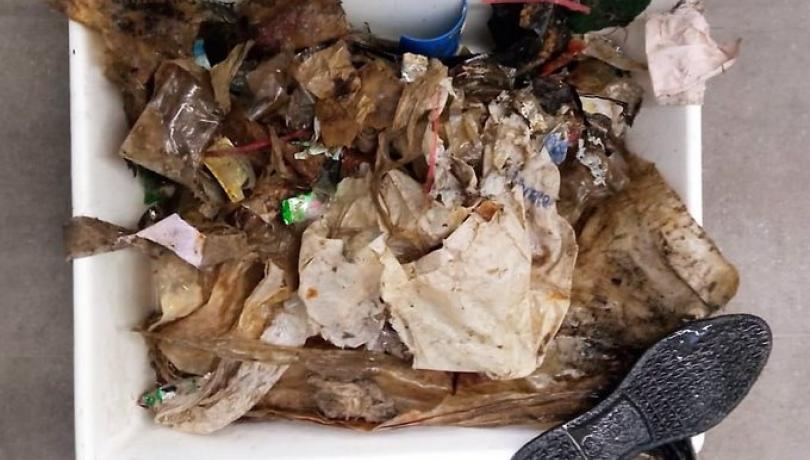The research, developed by ICATMAR, focuses on how infrastructures such as river mouths and underwater outlets decisively influence the distribution of waste on the seabed.

A new scientific study published in the journal Marine Pollution Bulletin has revealed that the presence of marine litter in the fishing grounds off the Catalan coast is strongly determined by land-based sources, particularly river mouths and underwater outfalls. The research, led by the ICATMAR team (a collaborative body between ICM-CSIC and the Government of Catalonia), highlights how these coastal infrastructures significantly influence the distribution of debris on the seafloor.
The study represents a key step forward in understanding how waste generated on land—often as a result of urban, domestic, and recreational activities—ends up accumulating on the seabed, with serious consequences for biodiversity and fisheries sustainability. Unlike previous studies that focused on the sea surface or beaches, this research examines the seabed of fishing areas and the relationship between waste distribution and proximity to human-made coastal structures.
The study is based on data gathered through direct collaboration with commercial bottom trawling vessels as part of the fisheries monitoring program ICATMAR has been conducting since 2019, which also analyzes the litter accidentally caught by trawlers. This approach has enabled a detailed snapshot of the composition and distribution of marine litter along the Catalan coastline.
Results show that plastic is by far the most abundant type of waste, representing up to 63% of the total collected by weight. Among these plastics are items related to domestic, recreational, and urban infrastructure, indicating a direct influence from coastal human activities.
The spatial distribution of debris is not uniform: the highest concentrations were recorded off the Barcelona metropolitan area, particularly near the mouths of the Besòs and Llobregat rivers and several underwater outfalls.
“We weren’t surprised to find large quantities of plastic, but we were struck by how intensely it is concentrated in certain areas,” explains Marta Blanco, lead author of the study. “The evidence points to the proximity of these infrastructures as a key factor in the accumulation of seafloor litter.”
Another relevant finding of the study is that no correlation was found between fishing effort and the amount of detected litter. In other words, heavily fished grounds did not show lower levels of waste compared to less fished areas. This reinforces the idea that the origin of the litter is primarily land-based, and that reducing marine debris accumulation requires tackling the problem at its source—on land.
“Improving water treatment, better controlling discharges through outfalls, and reducing single-use plastics are essential actions,” Blanco warns.
The study also highlights the value of trawling vessels as platforms for environmental observation. By systematically collecting litter without altering their regular fishing activity, these vessels provide valuable scientific data and contribute to collaborative environmental monitoring, aligning with European citizen science strategies.
In a context where the Mediterranean is considered one of the regions most affected by plastic pollution globally, studies like this are crucial to understanding the dynamics of the problem and guiding effective public policy. The authors stress the need for integrated coastal management that combines scientific, institutional, and social efforts to stop the influx of waste into the sea before it’s too late.
This research was conducted as part of ICATMAR’s marine litter monitoring program, funded by the Directorate General for Maritime Policy and Sustainable Fisheries of the Government of Catalonia. The data collected will be integrated into environmental indicator systems and will help guide concrete actions to reduce waste in particularly affected areas.